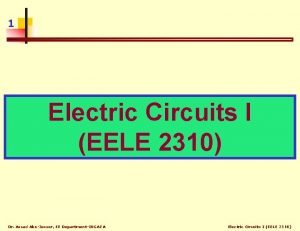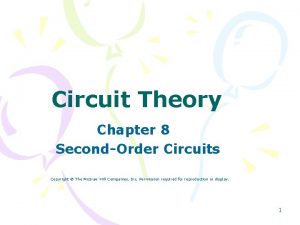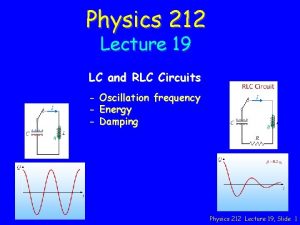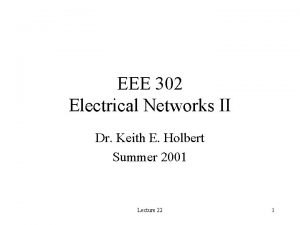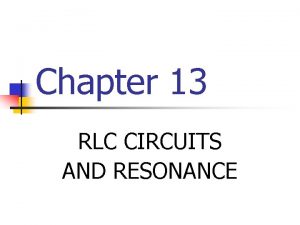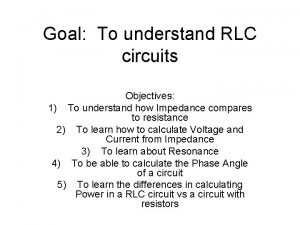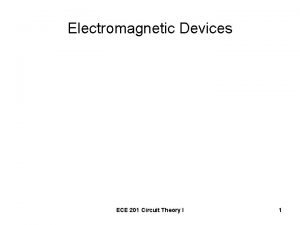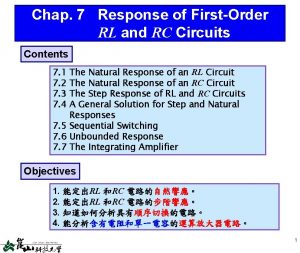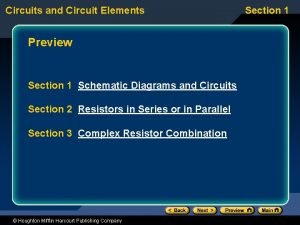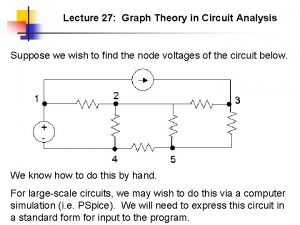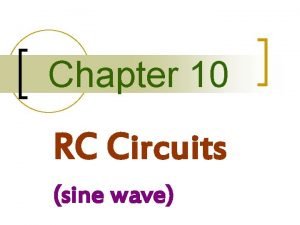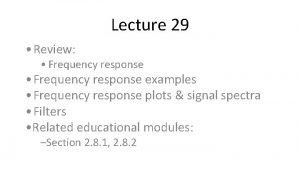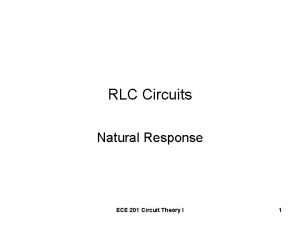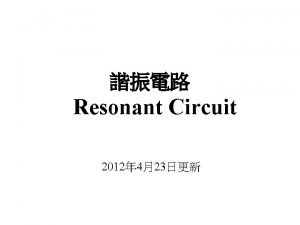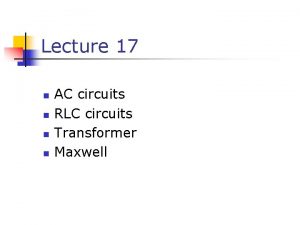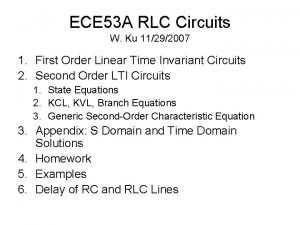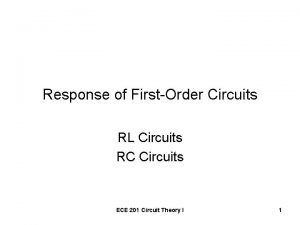RLC Circuits Natural Response ECE 201 Circuit Theory



















- Slides: 19

RLC Circuits Natural Response ECE 201 Circuit Theory I 1

Parallel RLC Circuit i. C + V 0 i. L i. R I 0 - + v - ECE 201 Circuit Theory I 2

Parallel RLC Circuit i. C + V 0 i. L i. R I 0 - + v - ECE 201 Circuit Theory I 3

ECE 201 Circuit Theory I 4

Characteristic Equation Look at the roots ECE 201 Circuit Theory I 5

Solved by ECE 201 Circuit Theory I 6

The general solution is given by The circuit behavior is determined by the values of s 1 and s 2. Rewrite them as Neper Frequency Resonant Radian Frequency ECE 201 Circuit Theory I 7

s 1 and s 2 are complex frequencies There are three possible outcomes for the roots – Real, distinct roots when ω02 < α 2 “overdamped” Complex conjugate roots when ω02 > α 2 “underdamped” Real and equal roots when ω02 = α 2 “critically damped” ECE 201 Circuit Theory I 8

Overdamped Response • Real, distinct roots • Solution has the form • Where s 1 and s 2 are the roots of the characteristic equation • A 1 and A 2 are determined by initial conditions ECE 201 Circuit Theory I 9

The Solution If s 1 and s 2 are known determine A 1 and A 2 from Initial Voltage on the Capacitor Rate of change of the initial Capacitor voltage ECE 201 Circuit Theory I 10

Initial Value of dv/dt ECE 201 Circuit Theory I 11

Initial Value of Capacitor current + i. C(0+) V 0 I 0 - ECE 201 Circuit Theory I 12

Example 8. 2 page 272 • For the circuit shown, v(0+) = 12 Volts, and i. L(0+) = 30 m. A. i. C 0. 2 μF + i. R i. L 50 m. H 200 Ω v - ECE 201 Circuit Theory I 13

Find the initial current in each branch • For the inductor, i. L(0 -) = i. L(0+) = 30 m. A • For the resistor, i. R(0+) = 12 V/200Ω = 60 m. A • For the capacitor, i. C(0+) = -i. L(0+) – i. R(0+), or i. C(0+) = -30 m. A -60 m. A = -90 m. A ECE 201 Circuit Theory I 14

Find the initial value of dv/dt ECE 201 Circuit Theory I 15

Find the expression for v(t) Roots are real and distinct, therefore overdamped ECE 201 Circuit Theory I 16

ECE 201 Circuit Theory I 17

ECE 201 Circuit Theory I 18

Sketch v(t) for 0<= t <= 250μs ECE 201 Circuit Theory I 19
 Lesson 8: comparing series and parallel rlc circuits
Lesson 8: comparing series and parallel rlc circuits Lesson 8: comparing series and parallel rlc circuits
Lesson 8: comparing series and parallel rlc circuits Rc rl lc rlc circuits
Rc rl lc rlc circuits Natural and forced response
Natural and forced response First order system transfer function
First order system transfer function First order rc
First order rc Quality factor of rlc circuit
Quality factor of rlc circuit Impedance rlc
Impedance rlc Rlc circuit conclusion
Rlc circuit conclusion Ece 201
Ece 201 Advantages of parallel circuit over series circuit
Advantages of parallel circuit over series circuit First order rc
First order rc Circuits and circuit elements
Circuits and circuit elements Primary immune response and secondary immune response
Primary immune response and secondary immune response How to do this
How to do this Parallel rc circuit impedance
Parallel rc circuit impedance Rl circuit frequency response
Rl circuit frequency response It is a natural response to loss
It is a natural response to loss Parallel vs series
Parallel vs series Parallel circuit with 3 bulbs
Parallel circuit with 3 bulbs
